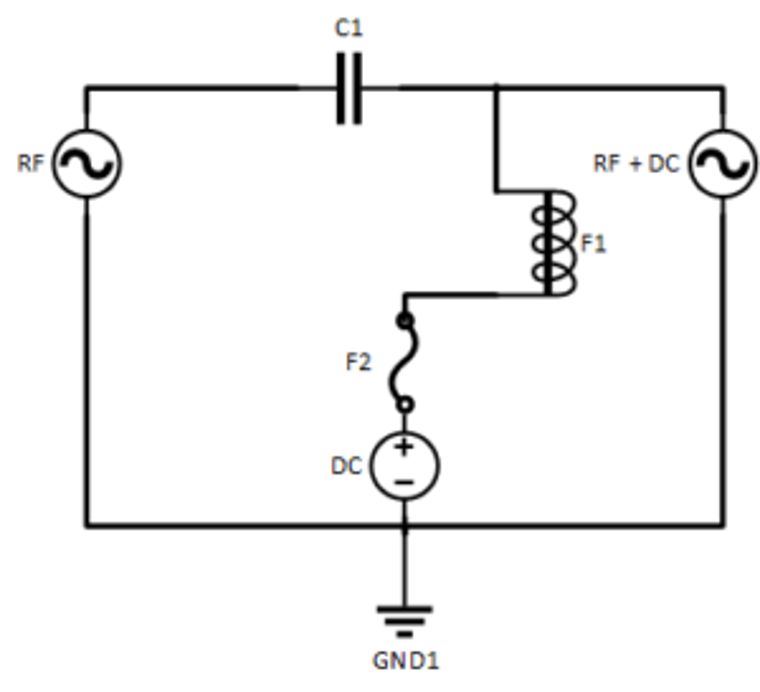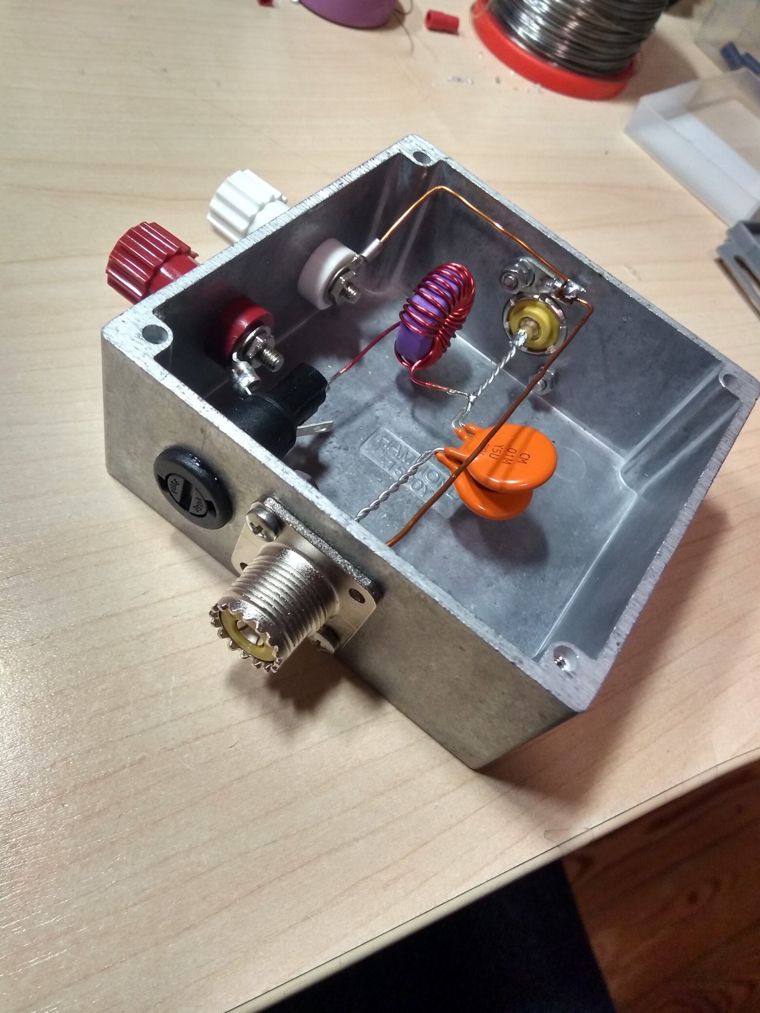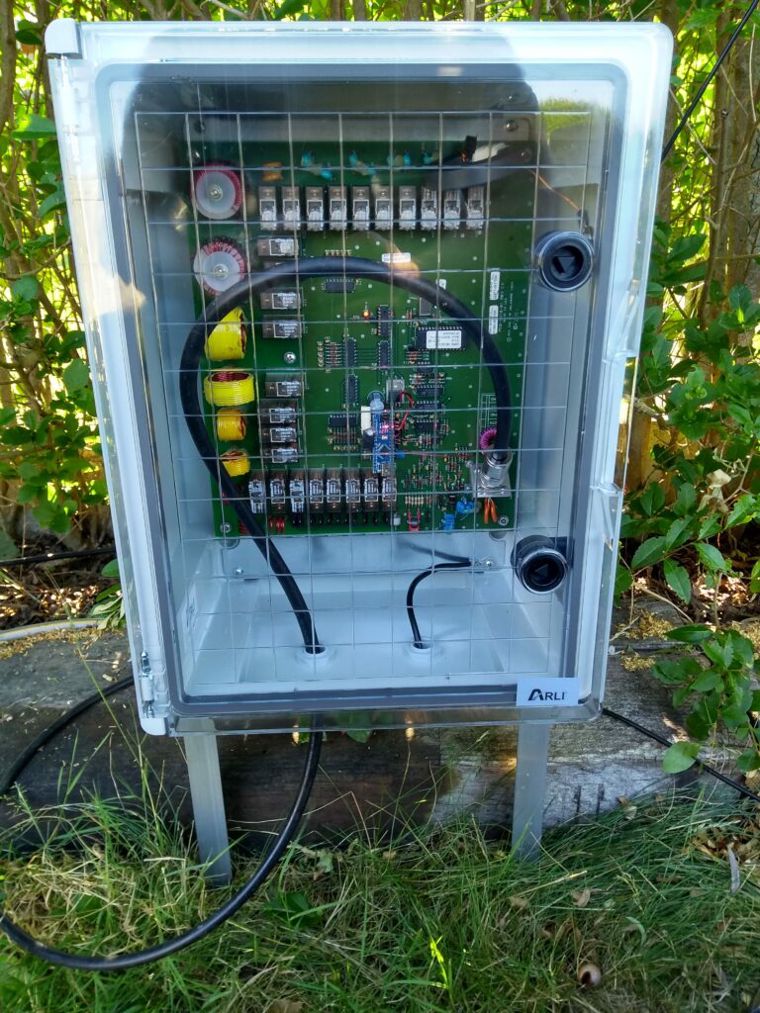Sea 1612c Remote ATU - bias & mods
So I acquired a SEA 1612C remote ATU for cheap, but without an enclosure. I figured I’d buy my own enclosure anyway, so no big deal.
As I didn’t want to use any remote cable at all, I had a little challenge:
- I need to give it power. Okay, that can be done via a bias-tee. The tuner isn’t made for it, but can be modified.
- I need some way to be able to “tune-on-demand”. I settled on a small Arduino Nano, but will eventually do this via a ESP8266 (I can remote control it via WiFi then)
So what is a bias tee? It’s actually no more than a handful of components: a couple capacitors, some ferrite to make a choke, and some nuts, bolts, sockets.. and a fuse. You double up these components to make one for the other side as well.
So what’s it look like? Well, see below. C1 in my case is 2x 10nF – 3kV capacitors (in parallel – so 20nF in total). F1 is a Ferroxcube 4C65 ferrite, wound with about 30 turn of magnet wire. It makes a nice 3-30MHz choke when testing it with a Vector Network Analyzer. F2 is a 3A fuse.
So how does it work? Well – RF in to the left – the capacitor blocks any DC; the choke blocks any RF going back into the DC supply. Build the same thing twice, and you can run DC over the same coax. Easy, nice, elegant. Great!
Alright, that’s one solution. Now we need to be able to “tune on demand”. There’s a pin called “DTN” on the connector block of the SEA 1612c – “Demand Tune”. The thing is:
- This only works when it already has a stored tuning
- Keeping this permanently low (instead of the usual “high” impulse when triggering something) locks the microcontroller up, as it’s on an interrupt pin. So no easy fixes.
Simple solution: slap on an Arduino which pulls DTN down, only once, after being powered on 3 seconds. Just an NPN and an Arduino, collector to DTN; gate to the Arduino output pin and emitter to ground.
I piggybacked the Arduino on the 5V regulator on the board (7805 regulator) so in terms of power: no issue.
To force a re-tune, I press a normal-close momentary switch which breaks power to the tuner. Upon release power is fed back to the tuner. I press PTT which recalls the previous setting. After 3 seconds, the Arduino pulls the DTN line low, causing the tuner to clear the memory setting. I can then put some RF on the tuner and it’ll force re-tune for that frequency.
I found a nice enclosure for the tuner at Arli24.de, a German web store. The enclosure is IP65 rated, well priced, has a window, and comes with all locks and mounting hardware.
I used two aluminium “L”-profiles to securely place the enclosure in the ground. Here’s the end result feeding my 40m long multiband half-wave end-fed antenna.


